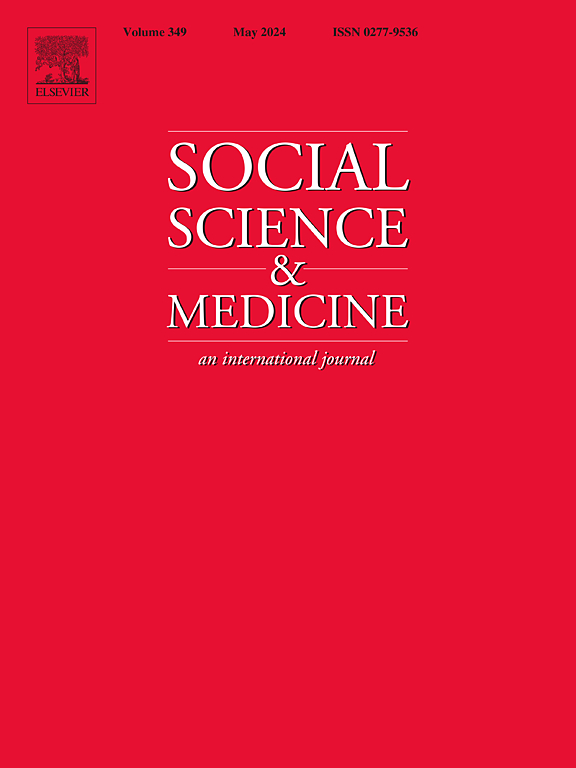痴呆发病率和医疗保健利用中的教育差异:来自意大利队列研究的证据
IF 5
2区 医学
Q1 PUBLIC, ENVIRONMENTAL & OCCUPATIONAL HEALTH
引用次数: 0
摘要
虽然痴呆症发病率的教育差异是众所周知的,但这种差异在痴呆症发病后是否以及在多大程度上持续存在却很少被探讨。在这项研究中,我们调查了痴呆患者在行政健康记录中痴呆诊断风险(痴呆发病率)和随后的医疗保健利用方面的教育差异。我们分析了拉齐奥地区纵向研究(意大利)从2012年到2022年。我们应用Cox回归来调查痴呆发病率和随后的三个医疗保健利用结果(全因住院、潜在可预防住院和急诊)的差异。在一组无痴呆的50 - 90岁人群(907 453名男性和1 083 538名女性)中,我们发现痴呆发病率存在明显的年龄差异。与高学历男性和女性相比,低学历男性和女性的发病率更高,特别是在50-64岁(HR = 2.09, 95% CI: 1.69-2.58, HR = 2.17;95% ci: 1.71-2.74)。在对27 158名男性和40 797名女性痴呆病例的随访中,受教育程度低的人发生全因住院的风险更高(HR = 1.24;95% CI: 1.16-1.32, HR = 1.18;95% CI: 1.09-1.27),潜在可预防的住院(HR = 1.27;95% CI: 1.17-1.37, HR = 1.19;95% CI: 1.08-1.31)和急诊(HR = 1.33;95% CI: 1.26-1.41, HR = 1.27;95% ci: 1.18-1.35)。在调整了先前存在的痴呆症识别的健康状况后,住院治疗的差异缩小了,而急诊就诊的差异则缩小了。总体而言,痴呆发病率的差异在随后的医疗保健利用中持续存在的程度较小,并且主要是由先前的健康状况造成的。本文章由计算机程序翻译,如有差异,请以英文原文为准。
Educational disparities in dementia incidence and healthcare utilization: evidence from a cohort study in Italy
While educational disparities in dementia incidence are well-known, whether and to what extent they persist beyond dementia onset is less explored. In this study, we investigated educational disparities in the risk of dementia diagnosis in administrative health records (dementia incidence) and subsequent healthcare utilization among dementia patients. We analysed the Lazio Region Longitudinal Study (Italy) from 2012 to 2022. We applied Cox regression to investigate disparities in dementia incidence and three subsequent healthcare utilization outcomes (all-cause hospitalizations, potentially preventable hospitalizations, and emergency visits). In a cohort of dementia-free 50–90-year-olds (907 453 men and 1 083 538 women), we found strong and age-patterned disparities in dementia incidence. Compared to highly-educated, the incidence in low-educated men and women was higher, especially at ages 50–64 (HR = 2.09, 95 % CI: 1.69–2.58 and HR = 2.17; 95 % CI: 1.71–2.74). In the follow-up of 27 158 men and 40 797 women incident dementia cases, low-educated had higher risk of all-cause hospitalizations (HR = 1.24; 95 % CI: 1.16–1.32 and HR = 1.18; 95 % CI: 1.09–1.27), potentially-preventable hospitalizations (HR = 1.27; 95 % CI: 1.17–1.37 and HR = 1.19; 95 % CI: 1.08–1.31) and emergency visits (HR = 1.33; 95 % CI: 1.26–1.41 and HR = 1.27; 95 % CI: 1.18–1.35). Disparities in hospitalization are reduced after adjusting for health conditions pre-existing dementia identification, less so those in emergency visits. Overall, disparities in dementia incidence persisted to a lesser extent in subsequent healthcare utilization and were mostly accounted by pre-existing health conditions.
求助全文
通过发布文献求助,成功后即可免费获取论文全文。
去求助
来源期刊

Social Science & Medicine
PUBLIC, ENVIRONMENTAL & OCCUPATIONAL HEALTH-
CiteScore
9.10
自引率
5.60%
发文量
762
审稿时长
38 days
期刊介绍:
Social Science & Medicine provides an international and interdisciplinary forum for the dissemination of social science research on health. We publish original research articles (both empirical and theoretical), reviews, position papers and commentaries on health issues, to inform current research, policy and practice in all areas of common interest to social scientists, health practitioners, and policy makers. The journal publishes material relevant to any aspect of health from a wide range of social science disciplines (anthropology, economics, epidemiology, geography, policy, psychology, and sociology), and material relevant to the social sciences from any of the professions concerned with physical and mental health, health care, clinical practice, and health policy and organization. We encourage material which is of general interest to an international readership.
 求助内容:
求助内容: 应助结果提醒方式:
应助结果提醒方式:


